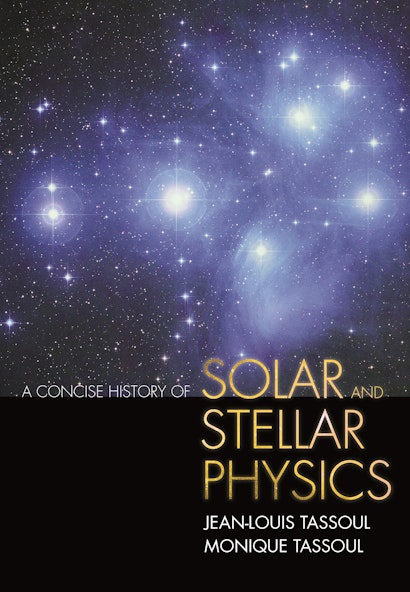This book provides a comprehensive overview of the history of ideas about the sun and the stars, from antiquity to modern times. Two theoretical astrophysicists who have been active in the field since the early 1960s tell the story in fluent prose. About half of the book covers most of the theoretical research done from 1940 to the close of the twentieth century, a large body of work that has to date been little explored by historians.
The first chapter, which outlines the period from about 3000 B.C. to 1700 A.D., shows that at every stage in history human beings have had a particular understanding of the sun and stars, and that this has continually evolved over the centuries. Next the authors systematically address the immense mass of observations astronomy accumulated from the early seventeenth century to the early twentieth. The remaining four chapters examine the history of the field from the physicists perspective, the emphasis being on theoretical work from the mid-1840s to the late 1990s—from thermodynamics to quantum mechanics, from nuclear physics and magnetohydrodynamics to the remarkable advances through to the late 1960s, and finally, to more recent theoretical work. Intended mainly for students and teachers of astronomy, this book will also be a useful reference for practicing astronomers and scientifically curious general readers.
Jean-Louis and Monique Tassoul received the 2001 Paul and Marie Stroobant Prize of the Académie Royale de Belgique for their work on stellar rotation and stellar stability. From 1968 to 1993, Jean-Louis, whose books include Theory of Rotating Stars (Princeton), was a faculty member of the Physics Department at the Université de Montréal.
"This is a fascinating story well told. A host of brief biographies, portraits and figures brings the text to life."—David Hughes, New Scientist
"The authors have compressed an amazing amount of information into a relatively slender book, and I expect that it will be a standard reference for many years."—William R. Green, The Leading Edge
"Appendices and an index round out this excellent resource especially recommended for college library astrophysics shelves."—James A. Cox, Midwest Book Review
"Unusually well researched and well written, this book is much more than a history. Written by two active astrophysical researchers, it has the distinction of being both a thorough history and an excellent introduction to the finer points of this difficult but important field. Rather than spoonfeeding sophisticated theory to its readers, as some books do, it leads its readers through the instructive if sometimes circuitous paths that the pioneers in the field followed. It does this so well that a reader will find even the most arcane topics to be understandable in a satisfying way. I have not seen this accomplished before so expertly."—Paul W. Hodge, Editor of The Astronomical Journal, author of Higher than Everest: An Adventurer's Guide to the Solar System
"Comprehensive without being tedious, this book is particularly valuable—indeed, exceptional—for its presentation of important problems in the field and its stress on theoretical research. I know of no other book that treats the history of stellar physics in such depth. It will broaden the perspective of students who already have a working knowledge of applied math and modern physics; this, at a time when specialization has become so prominent in astronomy. As an astronomer, I enjoyed reading this book and learned a good deal outside my own specialty."—Jack B. Zirker, former Director of the National Solar Observatory, author of Journey from the Center of the Sun

